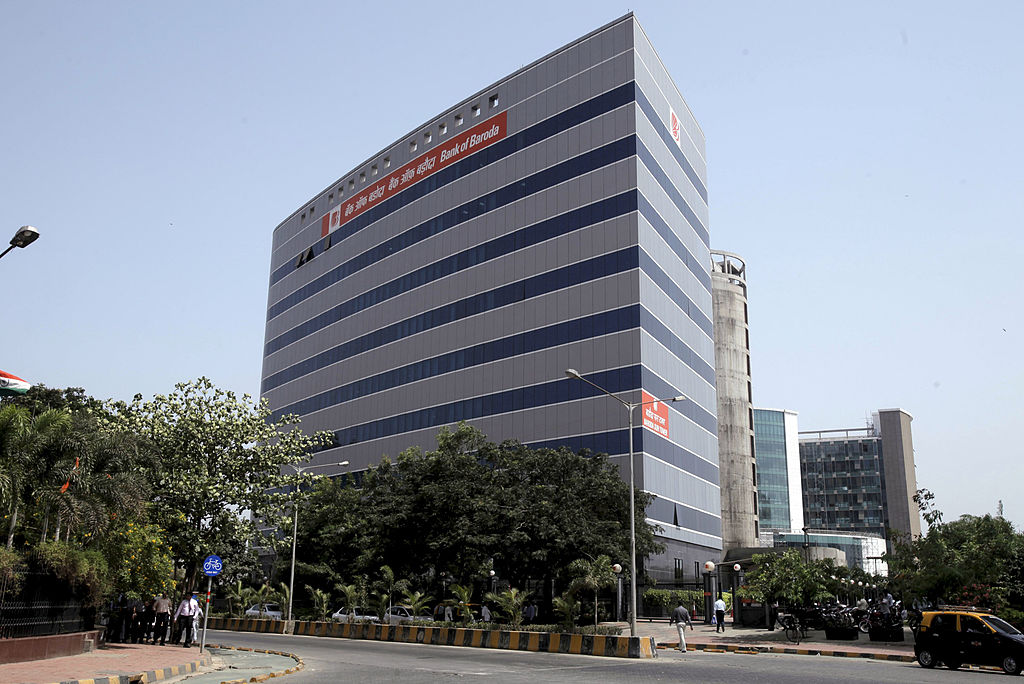
Twice a year, it seems, Treasury mandarins climb on their favourite hobby horse and urge the chancellor to reduce the tax breaks on private pensions.
They leak their arguments to sympathetic journalists – probably over lunch at a Pall Mall club – and there follows a wave of gloomy articles about the dire outlook for members of “defined contribution” (DC) schemes, unlike in the Good Old Days of “defined benefit” (DB) schemes.
As someone who is approaching the statutory age of retirement but has never been a member of a DB scheme, I have a much more optimistic view of DC schemes.
MoneyWeek
Subscribe to MoneyWeek today and get your first six magazine issues absolutely FREE

Sign up to Money Morning
Don't miss the latest investment and personal finances news, market analysis, plus money-saving tips with our free twice-daily newsletter
Don't miss the latest investment and personal finances news, market analysis, plus money-saving tips with our free twice-daily newsletter
Why today’s pensions are better than the defined benefit schemes of old
Conventional wisdom has it that those of us with defined contribution pension schemes have it rough compared with those on defined benefit schemes.
DC scheme holders pay in their contributions with no guarantees of what they’ll get out at the end of the period. Members of DB schemes, on the other hand, think (I use “think” for reasons that will become apparent later) they know what they'll get – a predetermined percentage of average or final salary. Who wouldn’t prefer the latter?
Yet for most of us, the latter is not an option. The majority of pension savers who are currently still working are now in DC schemes.
According to the government, there are 23.2 million members of DC schemes and 17.8 million in DB and hybrid schemes. Only 3.4 million members of DB schemes are active (ie, still paying in), so 98% of benefits paid in the last quarter of 2020 were from DB schemes.
This caused one pundit to conclude (and it’s a familiar argument, made by many): “You may not be as rich as your parents in retirement, because the lion’s share of money being drawn from pensions at the moment is from generous defined benefit schemes... there’s a risk today’s workers are being lulled into a false sense of security by the enviable lifestyles of many of today’s pensioners.”
Yet this is a misconception. As any economy grows, national wealth increases. The accumulation of wealth may disproportionately favour the better off – but rising income per person will mean that, on average, each generation is wealthier than the last.
The indolent, the spendthrift and the unlucky will be exceptions – but most people will, much to their surprise, come to realise that they are better off than their parents, whether they inherit or not. This isn’t a prediction, it’s mathematics.
OK, you might argue, but while it’s clear that rising real incomes make those in work better off than previous generations – what about in retirement? Surely DB schemes were better?
The “certainty” of private sector DB schemes was always an illusion
As a DC pension holder, I have to disagree. There are good reasons to prefer today’s DC pensions to the old DB model – within the private sector, certainly, where schemes have to be funded rather than paid for out of current taxation.
For members of DC schemes, pensions are a function of contributions, the timing of them and returns.
The recipe for success here is straightforward: start saving early (by the age of 30), achieve consistently good investment returns, and let the compounding of returns over decades turn moderate contributions into a substantial nest egg.
Keep your costs low – ideally by investing it yourself using a platform – trade as infrequently as possible (investment trusts are ideal) and forget about market timing.
The returns in the good years will dwarf the drawdowns in the bear markets. In time, your chief worry will be the threat of rapacious taxation on excess returns.
Those who contribute less while working and so enjoy a better standard of living may have to tighten their belts in retirement. But even then, given that people are living longer and healthier than earlier generations, retiring later may be an attractive option for those with insufficient pension pots.
DB schemes, in theory, gave people certainty, but reality – for the private sector at least – was more complicated. Corporate schemes were used to encourage loyalty, favouring those who stayed over those who changed jobs or were made redundant.
Later on, DB schemes were required to treat early leavers fairly and to increase pensions in line with inflation. But the cost of these changes made DB schemes unaffordable for the private sector. Funded schemes that have survived, like the Universities Superannuation Scheme (USS), have had to move from pensions based on final to average salaries, while employers have had to squeeze academic salaries to fund ever-rising costs.
The key problem for any DB scheme is to ensure that it can meet its liabilities not just now, but decades into the future. Any deficit falls on the employer, who might face bankruptcy if it is not addressed.
The calculation of a DB scheme’s current standing – and any deficit that needs addressing – is the job of the actuaries. But it produces bizarre results; a rise in bond yields and consequent fall in the value of both equity and bond assets will usually leave the scheme better funded, while rising valuations may put the scheme into crisis (at the risk of over-simplification, this is because falling interest rates increase the assumed value of future liabilities).
The resulting deficit will not only force the trustees to demand higher contributions from employees and employers, but also to “de-risk” the portfolio. This means investing the portfolio so as to reduce the downside risk, but also the upside potential. The result is a doom loop from which, for example, the USS is struggling to escape.
DC schemes also offer flexibility
This is the key reason why DC schemes are better than DB. They can seek to maximise returns without worrying about the short-term downside risk, safe in the knowledge that market setbacks are highly likely to be recovered, and that most DC pension investors have time on their side.
The better the returns, the less you will need to contribute. Higher returns for the same contributions will always make the DC scheme member better off than the DB. Framed in this way, it becomes clear that the “certainty” of a DB pension is an illusion, based as it is on uncertain future earnings.
DC schemes have other important advantages: members can tailor their risk to their age, prioritising returns early on, but protecting the downside as they approach retirement; they can manage the fund themselves or choose their manager rather than being at the mercy of someone more focused on the trustees and actuaries than them; and from the age of 55, they can withdraw 25% of their pension fund (up to a fixed limit) tax free and then, perhaps, invest the proceeds in ISAs.
Following reforms introduced in 2015, retiring DC scheme members can also keep their pension pots invested, rather than having to cash them in to buy over-priced annuities. Instead, they can draw down from their pension pots as and when they need the money. This explains why pensions in payment from DC schemes are so low relative to DB payouts.
Finally, on death, DC pension pots can be passed onto the next generation; DB schemes pay a reduced pension to widows or widowers but then stop.
There is one group of people, however, for whom DB schemes work well – the civil service. Theirs is, according to Which?, one of the most generous schemes of its kind, unfunded and guaranteed by taxpayers.
So when those mandarins lobby for a squeeze on DC pensions, they do so from an ivory tower. But until they meet a chancellor too gullible, distracted or disgruntled to resist them, DC scheme members should relax.
Get the latest financial news, insights and expert analysis from our award-winning MoneyWeek team, to help you understand what really matters when it comes to your finances.

Max has an Economics degree from the University of Cambridge and is a chartered accountant. He worked at Investec Asset Management for 12 years, managing multi-asset funds investing in internally and externally managed funds, including investment trusts. This included a fund of investment trusts which grew to £120m+. Max has managed ten investment trusts (winning many awards) and sat on the boards of three trusts – two directorships are still active.
After 39 years in financial services, including 30 as a professional fund manager, Max took semi-retirement in 2017. Max has been a MoneyWeek columnist since 2016 writing about investment funds and more generally on markets online, plus occasional opinion pieces. He also writes for the Investment Trust Handbook each year and has contributed to The Daily Telegraph and other publications. See here for details of current investments held by Max.
-
 Boost for over 100,000 families on Child Benefit as new HMRC payment system rolled out
Boost for over 100,000 families on Child Benefit as new HMRC payment system rolled outThousands of households will no longer have to pay the dreaded High Income Child Benefit Charge through self-assessment
-
 Are you being haunted by the ghost of Christmas past? How festive cutbacks could boost your long-term wealth
Are you being haunted by the ghost of Christmas past? How festive cutbacks could boost your long-term wealthThe average family spends around £1,000 over the Christmas season. Here’s how much you could have gained if you had invested some of the money instead.
-
 Act now to bag NatWest-owned Ulster Bank's 5.2% easy access savings account
Act now to bag NatWest-owned Ulster Bank's 5.2% easy access savings accountUlster Bank is offering savers the chance to earn 5.2% on their cash savings, but you need to act fast as easy access rates are falling. We have all the details
-
 Moneybox raises market-leading cash ISA to 5%
Moneybox raises market-leading cash ISA to 5%Savings and investing app MoneyBox has boosted the rate on its cash ISA again, hiking it from 4.75% to 5% making it one of top rates. We have all the details.
-
 October NS&I Premium Bonds winners - check now to see what you won
October NS&I Premium Bonds winners - check now to see what you wonNS&I Premium Bonds holders can check now to see if they have won a prize this month. We explain how to check your premium bonds
-
 The best packaged bank accounts
The best packaged bank accountsAdvice Packaged bank accounts can offer great value with useful additional perks – but get it wrong and you could be out of pocket
-
 Bank of Baroda closes doors to UK retail banking
Bank of Baroda closes doors to UK retail bankingAfter almost 70 years of operating in the UK, one of India’s largest bank is shutting up shop in the UK retail banking market. We explain everything you need to know if you have savings or a current account with Bank of Baroda
-
 How to earn cashback on spending
How to earn cashback on spendingFrom credit cards and current accounts to cashback websites, there are plenty of ways to earn cashback on the money you spend
-
 John Lewis mulls buy now, pay later scheme
John Lewis mulls buy now, pay later schemeThe CEO of John Lewis has said the retailer will consider introducing buy now, pay later initiatives for lower-priced items.
-
 State pension triple lock at risk as cost balloons
State pension triple lock at risk as cost balloonsThe cost of the state pension triple lock could be far higher than expected due to record wage growth. Will the government keep the policy in place in 2024?
